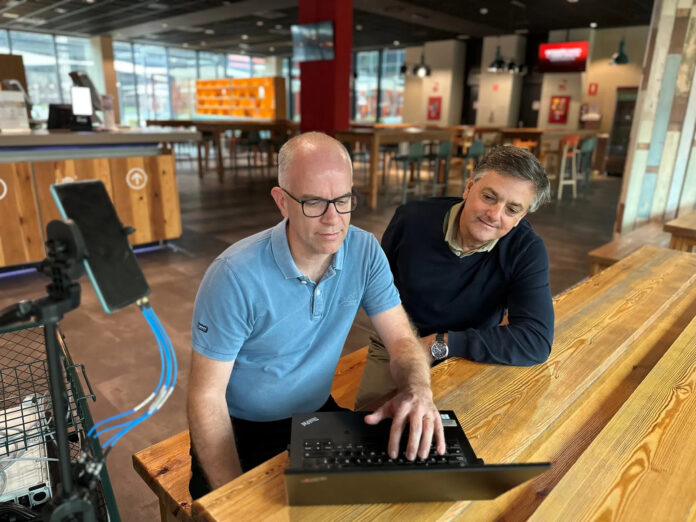The future of 6GHz will be a hot topic at the World Radiocommunication Conference (WRC-23) next month in Dubai
Vodafone said it has successfully tested mobile spectrum in the upper 6GHz frequency band. The timing is not accidental. The World Radiocommunication Conference (WRC-23) is due to take place in Dubai in November and the future of 6GHz spectrum will be a hot topic (See How much spectrum will Wi-Fi win at Wireless Global Congress and WRC?)
Vodafone wants to secure the upper part of the band for mobile to “ensure consumers and businesses receive even faster and more reliable 5G services over the next five to 10 years, while avoiding a mobile capacity crunch caused by soaring demand for bandwidth”.
Europe’s current stance is to give half of the 6GHz band to 5G and the rest to Wi-Fi but is yet to make a final decision. Other parts of the world have given the entire band over to Wi-Fi.
Vodafone’s trial
Vodafone engineers in Spain used a smartphone tuned to the 6GHz spectrum it expects will be made available for mobile in European countries. It achieved download speeds of up to 5Gbps, which is about double the top speed of today’s networks. The test attained an average of 2Gbps across various indoor locations.
Vodafone says the indoor result is especially important since around 75% of all mobile traffic originates from users at home, in the office, or in enclosed public places such as cafes, bars, shops, and gyms. The operator didn’t mention that almost all indoor mobile traffic relies on Wi-Fi.
Vodafone says that demonstrating it’s possible to achieve speeds comparable to the coverage levels to today’s 5G networks proves the spectrum could be readily and cost effectively deployed on mobile sites to boost capacity when today’s bandwidth is exhausted.
Discussions in Dubai
AT WRC-23, Vodafone and other mobile network operators are to call for the upper 6GHz spectrum band to be allocated to International Mobile Telecommunications (IMT). This is on the ground that it “will promote the harmonisation of 5G services across different geographical regions and balance out the allocation of the lower section of the band already allocated to Wi-Fi services.
That way businesses, public sector organisations and individuals across Europe get the best of both the mobile and Wi-Fi worlds.”
Alberto Ripepi, Vodafone Chief Network Officer said, “Without a fair and balanced allocation of 6GHz spectrum, mobile users worldwide could face a major capacity crunch within just five years. Additional 5G spectrum would boost the digital transformation of businesses and public sector organisations, and support the European Commission’s ambition to have fast connectivity within reach of all populated areas by 2030.”
Vodafone says it expects demand across Europe to grow by 30% annually as more devices and services are connected to 5G. This includes bandwidth-hungry applications like such as augmented reality headsets, health sensors and vehicles, which have yet to gain traction although their imminent arrival in the mainstream has been predicted for years.


